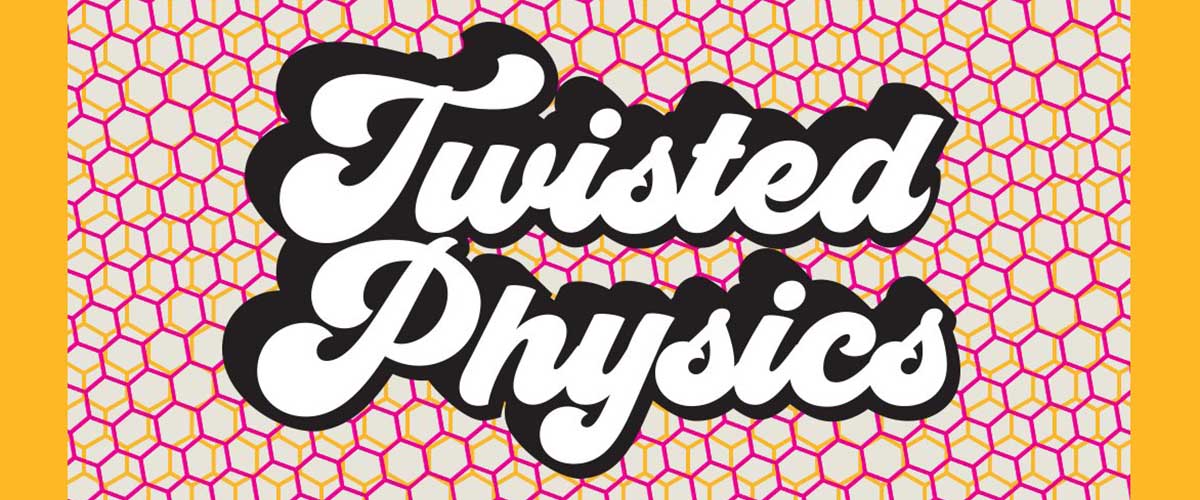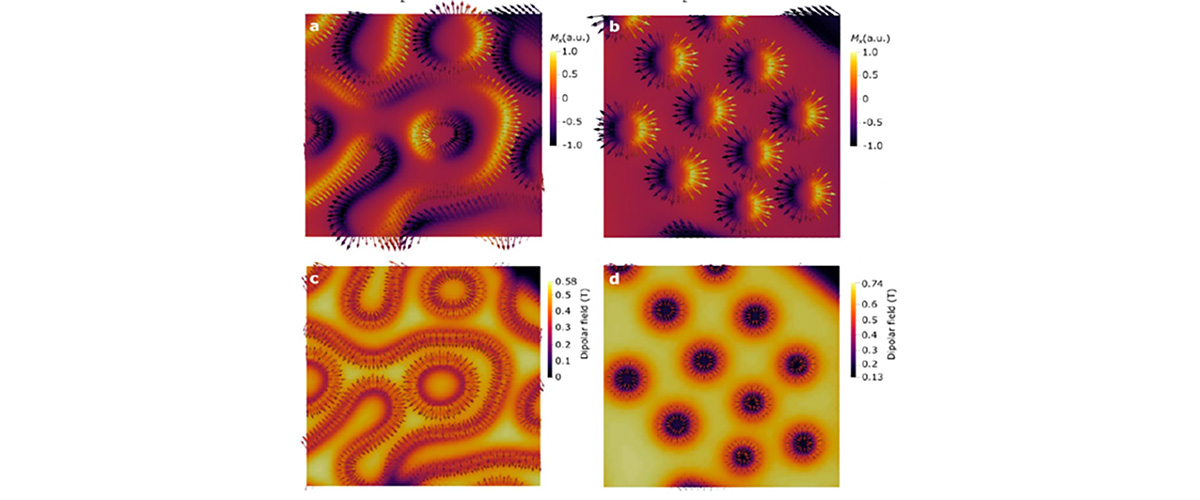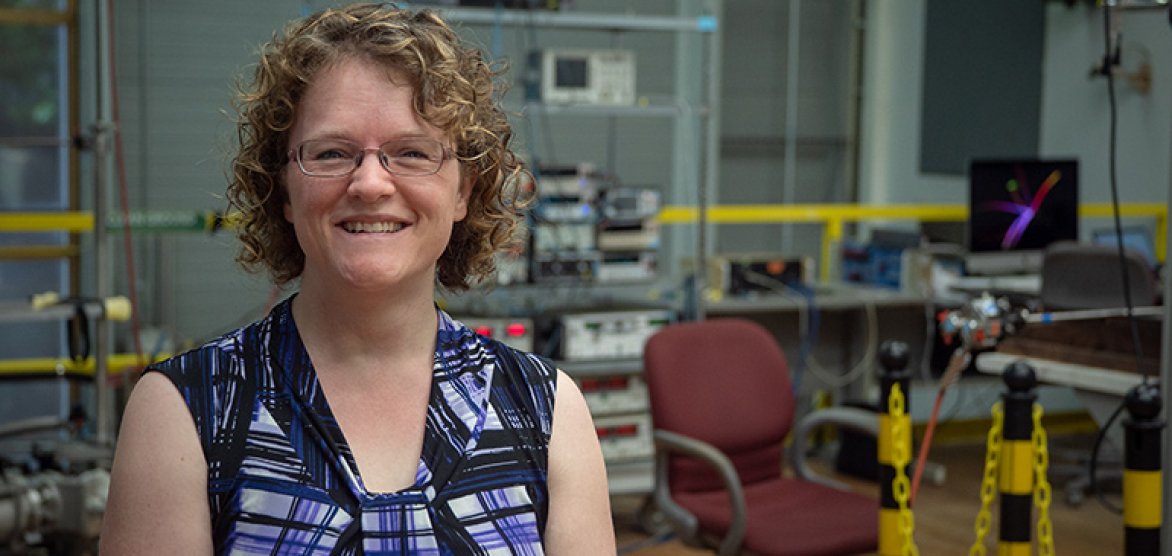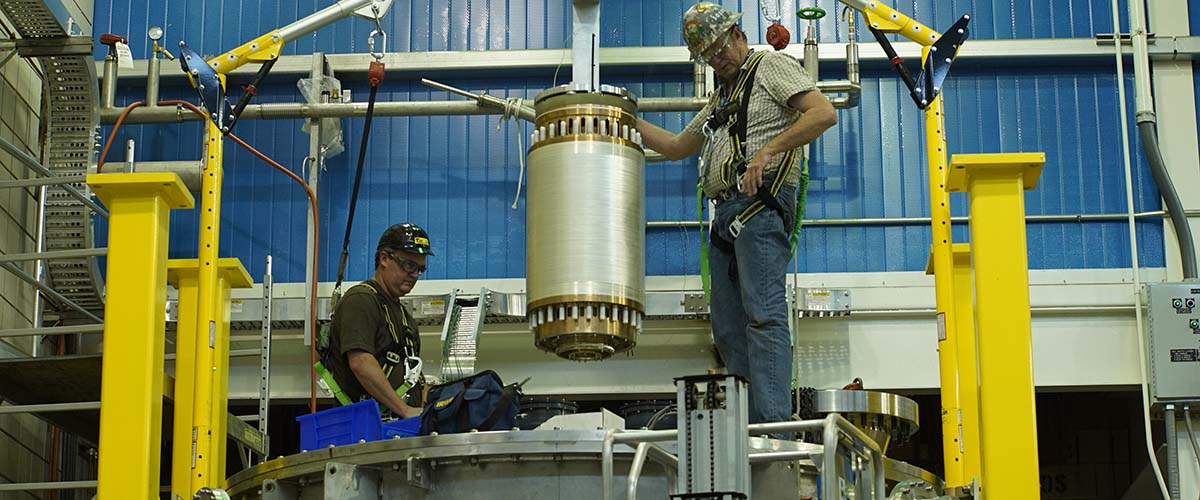Fifteen years ago, a team led by physicists Andre Geim and Konstantin Novoselov published a groundbreaking paper in the journal Science about a one-atom-thin variation of the element carbon. Called graphene, its discovery created a huge stir in the scientific community, in part due to its many incredible properties: extremely thin and light, yet incredibly strong; highly electrically and thermally conductive; elastic and impermeable to gas and liquid. Although spell-checkers still reject the word, graphene has already spawned thousands of patents.
While scientists continue to probe graphene's wonders, they are also exploring other two-dimensional materials. In fact, physicists have been inventively stacking these materials to create "fillings" between them that constitute entirely new systems with intriguing behaviors. As the story below by science writer Bennett McIntosh describes, scientists are making important discoveries by subjecting these 2D sandwiches to high magnetic fields, putting them under pressure or twisting the layers in just the right way, a nascent field dubbed twistronics. (See recipes for some of these "sandwiches.")
These heterojunctions, as the interfaces are called, are to condensed matter physicists what new planets are to astronomers: An uncharted environment where nature might be hiding some of its deepest secrets.
Stacking his hands one atop the other, National High Magnetic Field Laboratory Director Greg Boebinger described how each of these tiny assemblies is a unique world where never-before-seen physics could arise.
"There is this freedom to decide to take an insulating layer, then put a metal layer on top, another insulating layer, and then a magnetic layer and, finally, perhaps a superconductor," he said. "In a sense, we can design and build tiny, new universes that never existed before." — Editor's Note

An impossibly thin sheet of carbon sits in the bowels of the National High Magnetic Field Laboratory's Superconducting Magnet #2 at over 20,000 atmospheres — a far higher pressure than exists even at the ocean’s nadir. The magnet's field can reach as high as 18 teslas, but for now it is held much lower, allowing a subtle but profound shift in the dance of electrons through the pinhead-sized sheet. As the temperature in the experimental chamber drops toward absolute zero, individual electrons synchronize their quantum fluctuations, joining in a delicate choreography suffusing the sheet. This erases the material's electronic resistance, and electrons begin to flow through it easily, frictionless, in a manner scientists have seen only in a handful of other materials.
And with that, the sheet, made up of two layers of the 1-atom-thick form of carbon known as graphene, has transformed from metallic to superconducting.

You can introduce new physics that simply doesn't exist in the parent materials.
This experiment, performed last summer at the National MagLab's Tallahassee headquarters, is one of many revealing the exciting, surprising properties of atomically thin materials. Some, including graphene, are single layers of hexagonally bonded atoms; other arrangements may be 2 or even 3 atoms thick.
This sheer diversity of structures makes atomically thin materials exciting, says Matthew Yankowitz, the Columbia University postdoctoral researcher who performed the graphene experiment. He thinks of the temperature, magnetic field and even the order in which different sheets are stacked as experimental "knobs" that allow scientists to dial up new electronic properties, exploring the frontiers of materials engineering.
"By turning the knobs," Yankowitz says, "you can introduce new physics that simply doesn't exist in the parent materials."

The thinness of materials like graphene gives another advantage to the scientists who are tuning their properties and studying them. With so few atoms in the picture, it takes only a few electrons to dramatically alter the properties of a material — say, from metal to superconductor. By contrast, physicists trying to induce different properties in three dimensional materials with far more atoms often must introduce electrons into the system, usually by adding elements with "extra" or "missing" electrons, a process called doping.
"The beauty of graphene," says Yankowitz, "is you can just change the voltage, and tune from a metal to an insulator to a superconductor or any number of other configurations."
Studying how these configurations emerge can help physicists understand what goes on within harder-to-probe three-dimensional materials. For instance, the properties of high- temperature superconductors, an area of intense physics research, appear to depend on electrons confined to two-dimensional layers within their three-dimensional structure.
"The whole field of high-temperature superconductors is based on two-dimensional copper-oxygen layers in which the electrons travel, and we still don't understand why they're such good superconductors," says Greg Boebinger, director of the National MagLab.

I can guarantee you we will have something useful in five years' time, but I don't know what it is...
High-field magnets are particularly valuable tools for understanding two-dimensional behavior like superconductivity. In all materials, magnetic fields deflect the movement of electrons. But electrons confined to a 2D plane exhibit more interesting deflections. "Applying magnetic fields in two dimensions means that suddenly electrons have to start dancing with the magnetic flux lines in a complex way," says Boebinger.
Scientists first began producing atomically thin materials with the Nobel Prize–winning isolation of a single graphene layer in 2004, which soon led to a veritable zoo of other materials. Stacking and manipulating these materials provided new and rapidly expanding possibilities for exploring fundamental mysteries in physics and materials science — and new technologies.
One measure of the possibilities of 2D materials is the number of patents the field has generated worldwide. For graphene alone, that number soared from just a few hundred in 2010 to more than 6,000 by 2018.
"This is an extremely powerful way to make devices with new functionalities," says Uli Zeitler, a physicist at the High Field Magnet Laboratory and Radboud University in the Netherlands. In addition to providing fundamental physics insights, Zeitler says, these new materials will enter the consumer market in exciting and unpredictable ways. "I can guarantee you we will have something useful in five years' time," he says, "but I don't know what it is."

In the years since graphene’s discovery, there have been tantalizing hints that its behavior might shed insight onto the enigma of high-temperature superconductors, or even be a superconductor itself. Because superconductivity, like other quantum effects, depends on fragile correlations between electrons, most superconductors only work at a few degrees above absolute zero. Even "high-temperature" superconductors must be cooled to -196 degrees Celsius by liquid nitrogen to work. But in 2007, a team including Zeitler and Boebinger showed that powerful magnetic fields could induce another quantum phenomenon, the quantum Hall effect, in room-temperature graphene.
WHAT'S A MOIRÉ?
What a question! And — mamma mia! — do we have an answer for you! Check out "That's a Moiré!" for an animated explanation with an unusual musical twist!
Firm evidence of these fragile states remained elusive until early 2018. But that March, a team led by MIT physicist Pablo Jarillo-Herrero added a new twist — literally — to the search for quantum effects in graphene.
"Not only did we find these correlation effects, but we found them in spectacular ways," says Jarillo-Herrero. The team revealed that by stacking two sheets of graphene — one rotated 1.1 degrees with respect to the other — and cooling the assembly to a fraction of a degree above absolute zero, they could create an insulator. If a slight charge to the graphene was added, it became a superconductor! The discovery was lauded as the breakthrough of the year by Physics World and marked the beginning of a new subfield dubbed "twistronics."
Jarillo-Herrero's successful search for what he calls the "magic angle" in graphene is part of a wider trend in research on stacked atomically thin materials, making use of the large-scale "moiré patterns" generated when small-scale patterns overlap (think about the striping that appears when you photograph a screen with a digital camera).
Five years previously, three teams, one of them including Jarillo-Herrero and Yankowitz, had shown that the moiré pattern produced by stacking graphene between sheets of the similarly hexagonal boron nitride produced a beautiful fractal energy pattern called Hofstadter's butterfly, named for the scientist who predicted it nearly 40 years earlier.
In Jarillo-Herrero's 2018 experiment, stacking graphene sheets at a 1.1-degree angle results in a hexagonal moiré pattern that repeats approximately every 13 nanometers, a distance nearly 100 times farther apart than the pattern for single-layer graphene. This large-scale repeating structure puts a different set of constraints on the electrons’ wave functions, enabling the new behavior the team observed.
"The electrons are walking through a different landscape, changing their properties," explains Zeitler, who was not involved in this research.
How, precisely, the quantum interactions between layers of graphene create a superconductor is still a mystery — but it's one that Yankowitz is eager to help solve. Physicists were quick to notice some similarities between the particular flavor of superconductivity in graphene and that in high-temperature superconductors, but without knowing the precise mechanism in either case, the question of how high the critical temperature could go — whether it could, perhaps, even reach room temperature — remains uncertain.
To better explore inter-layer quantum interactions, Yankowitz resolved to add a new experimental dial — tuning the strength of these interactions by literally pressing the layers closer together. Enter David Graf, a physicist at the National MagLab. For years, Graf had worked with other MagLab users to place their samples, usually three-dimensional crystals, under enormous pressure within the experimental chambers of the magnets. But nobody had developed a comparable protocol for the 1-atom-thick layers Yankowitz wanted to work with, which are not only microscopically small, but thin enough that a simple static charge can make them explode.
"Matt had this crazy amount of enthusiasm," recalls Graf, "so I thought, Why don't we give this a try?"
Working together, the two showed one layer of graphene could be safely pressed to nearly 25,000 times atmospheric pressure between layers of boron nitride, then demonstrated that the same could be done in two layers with a moiré-generating twist, changing the strength of the quantum correlations between layers.
In fact, in two layers, as the pressure increased, so too did the "magic angle" between the two graphene layers that yields superconductivity. The results, published in the journal Science in January, are a step closer to exploring the full spectrum of graphene's superconducting states. Yankowitz hopes this will help generate new theories to predict and design the structure of superconductors that work at ever-higher temperatures. "This pressure work provides a road map for driving up that critical temperature as high as it can possibly be," says Yankowitz.

There's an enormous number of materials that we can apply together in an infinite number of combinations.
Cory Dean, Yankowitz's advisor at Columbia and lead author of one of the other papers on Hofstadter's butterfly, says this is only the beginning of what the combination of remarkable physics and high-powered magnet facilities can do. "The fact that we were able to do this [experiment] on this system is really a testament to the confluence of expertise that exists at the National MagLab," he says.
Graphene is just the beginning. Physicists are now experimenting with atomically thin sheets of materials from highly reactive black phosphorus and the semiconductor indium selenide. Dean and Yankowitz are exploring the properties of a newer class of atomically thin materials, transition metal dichalcogenides (TMDCs), which bring their own sets of experimental challenges (see the sidebar How to Whip Up New Physics for that double-decker recipe) and exciting properties, including the ability to convert light to electricity. While high magnetic fields typically destroy superconductivity, Uli Zeitler, the Nijmegen physicist, was on a research team that recently found that one of these TMDCs, molybdenum disulfide, can maintain its superconductivity even under extremely powerful magnetic fields in excess of 35 teslas.
It's a vast quantum playground promising endless exploration and revolutionary discoveries.
Says Dean, "There's an enormous number of materials that we can apply together in an infinite number of combinations."
Story by Bennett McIntosh






